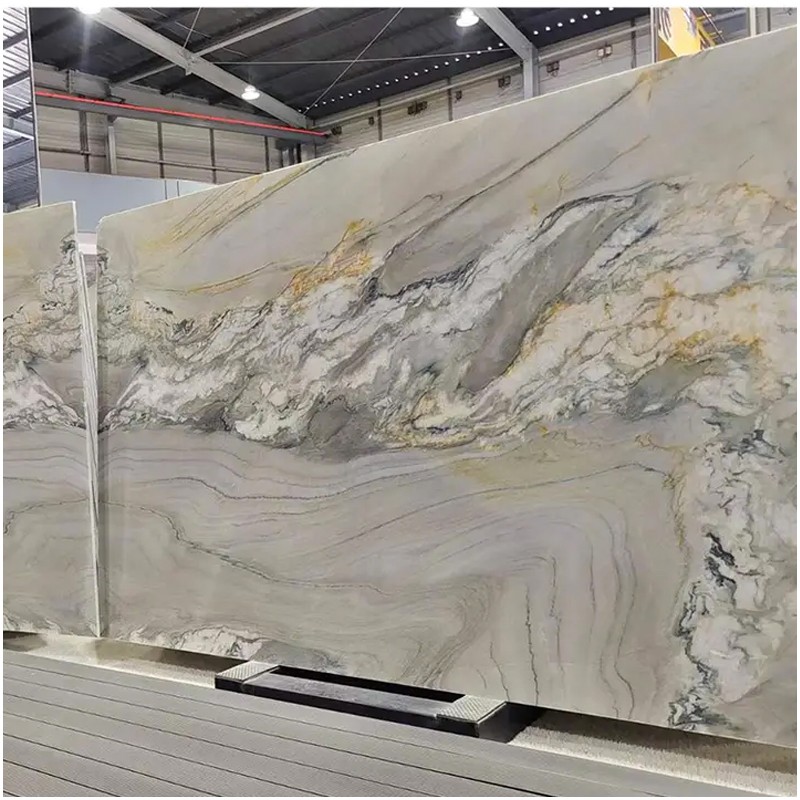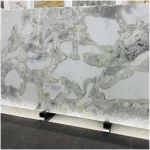In recent years, various building decoration projects, such as villas, hotels, clubs, office buildings, business centers, etc., have increasingly used stone decoration. Some of the decoration effects and requirements in the construction of the infrastructure construction of the project are professionally designed. The department already has a design plan.
Some are only decorated after the completion of the civil works. There is no specific decoration design drawings, especially the stone parts, because there is no unified national standard such as glass curtain walls and aluminum alloys.
In addition, the specific requirements of each customer are very different. Therefore, it is necessary to have both professional knowledge and processing technology of stone materials, and engineering and technical personnel who understand civil construction to carry out surveying and mapping according to the on-site civil construction facilities. According to customer requirements and assumptions, draw into engineering drawings.
This adopted technical language can also meet the technological characteristics of stone processing and achieve the decorative effect required by customers, which is commonly known as the stone lofting technology.
1. The basic requirements of the lofter
As an engineering technician in stone lofting, we must first understand the performance of the stone, such as different stone varieties, color pattern matching and coordination, physical and mechanical properties, processing performance, etc. of the stone; followed by a certain mechanical processing technology Knowledge and experience.
Although stone is a brittle material, there are many processes, steps and mechanical processing in the processing process. Stone processing is from cutting to modeling to rough grinding to polishing to packaging. It is similar to mechanical preparation of raw material, rough car and fine car. The process of polishing a finished product is basically the same, but the equipment and tools used are different.
Once again, as a technician for stone lofting, it should also have basic knowledge of industrial and civil construction, can understand architectural construction drawings, structural construction drawings, and even infrastructure drawings such as plumbing installation, facades, and sides; finally, the stone The basic method of installation is known, such as dry hanging or wet sticking, and the matching relationship between the decorative part of the stone and other materials.
Second, visual inspection
That is, view the building entity on site to determine which dimensions to measure, what basis to take, which places to measure in detail, which are important dimensions that must be guaranteed, etc., the surrounding decorative materials and performance, and the civil structure of the building Wait.
E.g:
1. The lofting of the spiral staircase is first determined through on-site observation:
①The location of the center of the circle
② The coordinates of the starting point and end point of the arc
③ Casting radius
④Projection arc length
⑤Elevation of each section
⑥Design plan and platform of the general trend of the spiral elevator
⑦The closing problem of the starting point and the end point and the transition point
⑧ Treatment of the special structure of the staircase
⑨ Its dependence on surrounding ornaments, etc.
2. Determine the benchmark
The benchmark for lofting is very important. It is a reference point (line) for on-site measurement of various dimensions and geometric calculation and drawing in the next step. In principle, you must first find a space that can take care of more dimensions as much as possible. The vertical line gets other baselines.
However, due to the chaos of the general construction site, the bomb line is not only limited by the site, but also by the time. For building decoration, the accuracy requirements are not too strict, so it is generally faster to use the cylindrical surface, wall surface, beams, doors, windows, and horizontal surfaces of civil construction as an approximate datum, especially when the civil construction is more complex or multi-layer construction measurement. It is more convenient to use the column as a reference and the measurement is more accurate.
If there is no ideal civil wall or column as a reference, generally draw a line in an appropriate place, and then draw a line or place a flat object on the ground as a reference.
3. The measurement must be targeted
First, we must determine the size of the graphics. Generally, the horizontal and vertical dimensions should be measured according to the determined benchmarks, and the coordinate measurement method should be used for time measurement. And measure the key dimensions, to be able to draw graphics and guide processing according to the measured dimensions, such as length, width, height, chord length, bow height, arc length, etc.
Second, we must consider the technical characteristics of stone processing, make the necessary splits and parts, and reach a consensus with customers.
4. Record
When setting out on site, all the drawings are sketches, which are inconvenient to write and require fast speed. If you do not pay attention, there will be a phenomenon where a certain size does not refer to that place, or the phenomenon that the horizontal direction is confused with the vertical size.
It is therefore recommended:
A. The text direction is marked according to the standard drawing format.
B. When the size is too large, use local magnification to draw, do not squeeze many sizes together.
C. It is generally faster and more convenient to record in the form of a floor plan.
5. Control dimensional error
When measuring, it is better to measure more than one size. It seems that the parallel size, the distance between the two ends should be measured to determine how big the civil engineering error is, and you must be aware of the civil engineering error. Pay attention to the relationship between the total size and the size of each segment. Generally, the error should not exceed 20rran, and it must be reviewed on the spot to avoid conflicting measurement results and ensure the accuracy of the measurement.
6. Retain the margin of adaptation
Combined with various decoration methods, a size allowance is reserved on the basis of measurement; according to the size of the civil engineering error, a certain adjustment allowance is reserved for the stone part; according to the type of collision, an appropriate trimming allowance is reserved, etc. .
7. Review
After setting out the site, even if there is no time to draw a regular drawing, at least one neat overall drawing should be drawn to verify the accuracy of each measurement size, so as not to miss the size or clerical errors, otherwise, drawing and processing cannot be done after leaving the site.
In short, stone lofting is a very technical task, requiring a lot of knowledge and spatial imagination. At the same time, in general, lofting is the pre-sales service work for the order. It needs to actively communicate with the customer, obtain the customer’s trust and support, and understand their intentions in order to achieve the desired result and win the customer. This requires constant exploration and summary in work practice.







